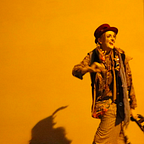The content in process of journal writing
I began this process of journalling about my education practice thanks to an allocation to do so for my work. My employer has provided some of us who were interested with time to develop and reflect upon our teaching. A great privilege!
We were asked to start a learning journal to reflect upon our practice weekly. My workplace supports an active learning model with the students, and learning journals form an important part of the educational model we operate within. They are also one of the aspects of our model that students struggle with the most. A few students love the concept, and seem to very naturally take to reflecting on their learning in ways that enrich and develop it; but most of them find the process confusing and frustrating. So when we as educators were asked to complete our own learning journal, I suppose part of the rationale was to enable us to experience it in the same way the students do, so that we can learn from this what might be done to improve the process.
We were invited to complete our learning journal in any format that we desired. Most (not all) of my colleagues opted for a google site, which is shared online only within our organisation. I decided that I wanted the challenge of posting publicly, thus this blog was born.
Interestingly though, it is this very decision that has often stopped me from posting my weekly reflections as they are meant to be posted — weekly. The whole point of the learning journal assessment for the students is that they reflect as they go — not just wait till the end and write up 13 weeks worth of learning. A lot of the time they need prompting to do this. I’ve discovered, this last ten weeks, that I’ve been doing the same thing. For me, I think a large part of the reason is to do with the decision to make the journal public.
I’ve written ideas, and part articles, and saved them for later — the added pressure of knowing that anyone could see them has in some ways held me back from publishing them on time. “Is it interesting enough?” “Is it at a standard people would expect for a tertiary educator?” “Is it just obvious?” These questions have plagued me since I decided to go down this path. I haven’t wanted to just reflect on my week’s work, but to come up with a way to do it that is interesting on its own, and makes some valid point as a stand alone piece. (I’m aware that there are probably very few people actually reading these, and they are probably all my colleagues, but even so the possibility of other readers is there.) Reflecting on this situation today, I wondered if something like this could be relevant for the students, too.
They are not publishing their learning journals entirely publicly as I am, but they are publishing them for viewing by other students and staff, potentially nationally. It’s a potentially unknown audience. Could the pressure of this situation be preventing them from really exploring all of their ideas? Could they be subconsciously asking themselves the same questions that I am, and therefore choosing not to step out and risk experimentation?
I don’t know. But the thought crossed my mind.
Which brings me to the title. The ‘content in process’ of journal writing. This is a term that comes from my studies into Therapeutic Arts Practice. We use this term all the time at the institute where I study. (I am myself a student, at two institutions, as well as an educator.) It is used when the process of creating the art work, or the process of working with someone therapeutically brings out our own relevant content. For example, I as an educator am given an allocation to reflect on my own teaching practice and how I might better teach within this active learning model, in doing so I start a learning journal as the students do, in doing so I myself encounter anxieties that prevent me from publishing my learning journal. As the students potentially do. Content in process.
On the positive side, I believe choosing to make this public has meant that I have worked at a higher level than I potentially would have otherwise. Or at least, a different level. A student whose learning journal is outstanding reported to me last week that it was the pressure of showing the journal to others in the class that motivated him to do so well with it. (This is not currently done in all classes — there is some debate about whether this is too stressful.)
I suppose the next step would be to ask some students if this is what they experience. Actually engaging them in the process would answer the question. Could I have just done that without writing all of this? In theory, yes. Although I wouldn’t have arrived at the realisation that this might be an anxiety they share unless I experienced it myself.
Experiential learning. Content in process.
More to come.
